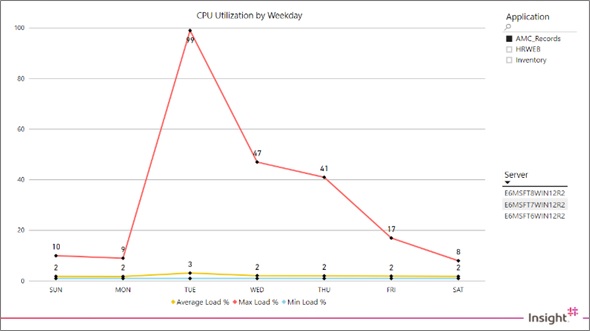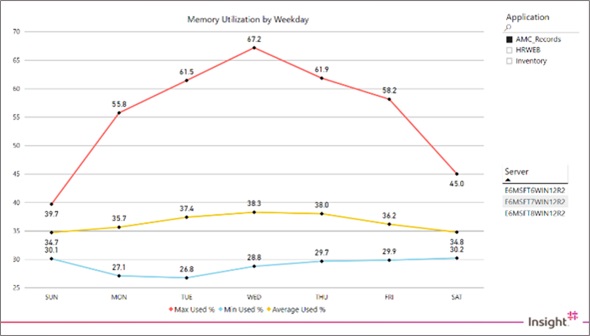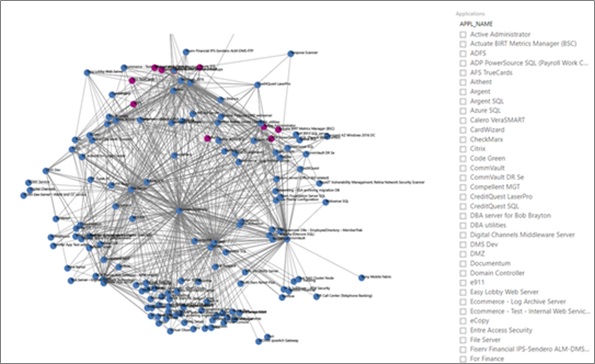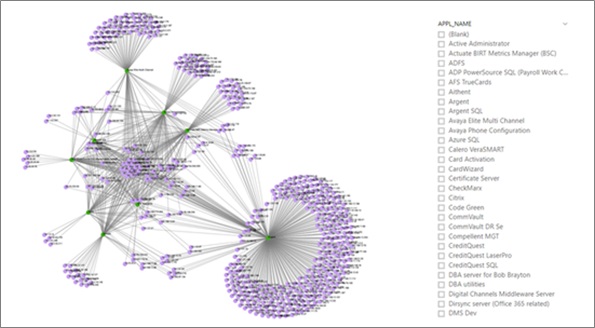AWS Partner Network (APN) Blog
Making Cloud Transformation Simpler and Faster with SnapStart
By Jignesh Suthar, Sr. Partner Solutions Architect – Microsoft Platform at AWS
By John O’Shaughnessy, Architect Cloud + Data Center Transformation at Insight Enterprise
 |
 |
 |
When any business starts their cloud migration journey—be it a big enterprise or SMB—the discovery and assessment phase is critical. This is when they make the crucial decision of selecting the right cloud provider, and pick one of the 6 R’s strategies for their migration and modernization.
Knowing what customers have in their IT estate is important when beginning strategic transformation initiatives, consolidating data centers, migrating workloads, or modernizing data platforms. Here, we’ll go through the cloud migration journey of one of Insight’s clients to understand how they used SnapStart and various technologies to make the migration process more efficient.
Insight is an AWS Advanced Consulting Partner with the AWS Microsoft Workloads Competency. SnapStart is a data collection and discovery engine developed by a team of data experts at Insight that helps organizations identify and map IT environments spanning cloud, edge, and both on-premises and off-premises data centers.
In this post, we will describe the features of SnapStart and how it works, providing links to video and infographic resources you can review to better understand this tool and what it offers.
A variety of solutions in the market today perform some kind of IT environment discovery. While many provide a level of insight, most fail to deliver the kind of information and analysis an organization needs before it begins migrating workloads to the cloud.
As a longtime IT services provider with experience in both legacy data centers and cloud, Insight saw this shortcoming and decided to do something about it. Hundreds of Insight clients have used SnapStart with success, turning projects forecasted to take months or years into exercises lasting days or weeks.
Due Diligence Must Be Part of Any Migration Initiative
One of the things we see often is organizations that have moved workloads to the cloud without first taking stock of baseline factors. This includes application characteristics, dependencies, security or compliance requirements, data storage, data protection, anticipated growth, and so on.
What’s the big deal with this? Consuming cloud services without proper alignment between cloud strategy and cost expectations can have unfavorable outcomes. A recent Insight-commissioned IDG survey concluded that 69 percent of organizations experienced higher-than-expected cloud costs.
Moving workloads out of a cloud once you’ve migrated them in is not only time-consuming but can also be expensive.
Performing due diligence prior to migrating workloads to the cloud is truly the key to success in the cloud today. The first step in this process is getting an accurate picture of what exactly you have, how it’s operating, and whether it’s a good candidate to move to the cloud.
SnapStart was developed precisely to make this easier:
- It’s quick, focusing only on information needed for migration analysis.
- It uses simple commands, has a small footprint, and can run from a laptop or virtual machine (VM).
- It can accommodate requests at any time, even during delivery.
- It imports/exports data directly to/from existing and third-party tools.
- All scanned data remains entirely on-site and secure.
There are no licensing fees involved with SnapStart. Plus, network traffic and CPU demand remain constant no matter how many servers you have in your environment.
This video provides a great introduction to SnapStart and what it can do.
See Everything — Really, Everything
It’s not uncommon for organizations to have sprawling IT environments without an up-to-date map of the estate or an understanding of dependencies. This lack of visibility becomes an issue when you begin moving parts of your environment to the cloud.
SnapStart provides complete reports of all IT assets in production, as well as those that are decommissioned. It shows you a picture of all servers in your environment, including any that need remediation, plus application dependencies, counts, and criticalities.
The SnapStart discovery and analytics tool provides these key graphical reports:
- Inventory counts that list all servers and identify forgotten assets.
- Heat map showing workload characteristics, trouble spots, and migration targets (more on this in the next section).
- PowerBI network diagrams with point-in-time data and multiple application/host/server perspectives.
Following are examples from standard SnapStart deliverables demonstrating the value of graphical output to increase understanding of complex environments. The data from SnapStart allows consultants to develop a more complete picture of a customer’s environment, leading to a comprehensive migration strategy.
Figure 1 – CPU utilization by weekday report.
Detailed CPU utilization information in Figure 1 is presented by application and server, allowing analysis for workload sizing. It also highlights opportunities for automatically adding or removing resources as workloads needs increase or decrease.
In Figure 2 below, you see that presenting detailed memory utilization data along with CPU utilization data by day provides the critical information required for resource sizing within AWS. Properly sizing workloads helps to ensure customer satisfaction after the migration is complete.
Figure 2 – CPU and memory utilization by weekday report.
One of the most valuable benefits of SnapStart is the ability to drill down to see critical application to application dependencies. Using PowerBI, we begin with the compete cloud showing a mass of dependencies, and then drill down to specific workload categories or even single applications.
Powerful filtering capabilities makes it easy to group inter-dependent workloads to ease migration planning.
Figure 3 – Interactive drill-down report, application to application.
In addition to application-to-application mapping, SnapStart provides graphical representation of application to server dependencies. This data is used to guide resource planning as well as migration event planning.
Understanding which servers host which applications is critical for planning successful migrations. The ability to easily drill into the complex cloud of information makes that planning process straightforward.
Figure 4 – Interactive drill-down report, application to servers.
At Insight, SnapStart is used in conjunction with expert, qualitative analysis from consultants to piece together what’s in the tool outputs, and what can be understood from observations and conversations with IT staff and business owners.
Built for Cloud Transformation
Who isn’t looking to accelerate a hybrid cloud today? The potential benefits are obvious: agility, scale, speed, and the building blocks for innovation.
But, again, moving a workload (or group of workloads) to the cloud without first understanding how it fits into your IT environment can be a recipe for disaster. It’s simply a must to cover your bases. Get some quick tips in this infographic showing keys to a simply flawless migration.
SnapStart can be a big help. When used as part of a workload alignment engagement, it provides reports that display status for each application based on its suitably to move to the cloud. SnapStart flags good candidates as cloud-ready for PaaS.
You can also request SnapStart assist you with calculating projected cloud costs for the intended migration target. If cash management is a top priority for your organization, insights like these can inform decision-making and prevent costly mistakes.
Success Stories
Here are a few examples of what SnapStart has been able to achieve in the field:
- SnapStart and the Insight team saved one client months loading up their ServiceNow configuration management database (CMDB). The client estimated 16-18 weeks for the data refresh, but SnapStart finished the job in hours.
. - Another client’s CIO had been told their applications had been migrated off a number of outdated and decommissioned servers. SnapStart discovered 60 of them (Windows 2008 servers) were still running.
. - Using a different discovery engine, another client performed a discovery over the course of roughly 10 weeks, with 65-75 percent completeness and accuracy. SnapStart was brought in for a re-discovery, which was completed in two weeks, at 95 percent data completeness and accuracy. Approximately 2,000 servers were scanned in the first week.
Case Study:
The following case study describes how Insight helped a leading appliance repair services company make its transformation to the cloud. Read the full story.
The Client
The client is a top appliance repair service in the United States, with more than seven million repairs performed each year, and thousands of professional technicians employed nationwide.
For three decades, the client has provided home improvement, repair and maintenance, and cleaning services to help homeowners keep their residences in optimal condition.
The Challenge
Following a series of divestitures and bankruptcy filings from its former parent company, the client received a new executive mandate to vacate all four of their data centers. The initiative called for the client to migrate all applications to AWS while ensuring business continuity.
As the largest and most profitable division, the client faced added pressure from its new ownership to revitalize their IT environment. The relative turbulence throughout the business had left their IT systems and processes in need of care. Their applications and OS levels were out of date, and their IT organization had lost headcount and knowledge.
The new parent company wanted big changes. They expected transformation, agility, and seamless project execution with minimal downtimes. The Insight Cloud + Data Center Transformation (CDCT) team was selected from a host of major consulting firms and service providers to help the client drive their transformation.
There were hurdles to overcome from the start: an expired master service agreement, the need for a separate line of credit to support the data center exit, and the need for partner funding to provide initial assessments.
The Solution
The engagement was multi-phase, involving dozens of CDCT team members and all key stakeholders in the client organization.
Phase 1: Comprehensive Discovery Using SnapStart
In this phase:
- CDCT delivered a workload transformation assessment. This included performing a thorough discovery, mapping all existing IT assets and dependencies, developing financial models for migrating to cloud, and providing analytics and a roadmap of next steps. Together, CDCT and the client addressed a variety of critical considerations—operations, financials, processes, people—and assessed roughly 150 applications and 500 servers.
. - Migration planning was supported by Customer Application Data Manager (CADM), the in-house survey tool developed by the CDCT team. This enabled timely, effective application interviews and response validation through a series of standardized questions developed for the client. With output from CADM, they were able to easily locate gaps in the data and be thorough in requests for further feedback.
. - All applications had to be migrated to AWS, even those that were stubborn or in need of significant work to perform optimally in the cloud. CDCT created action plans for each application, including AIX, SPARC, and mainframe applications.
. - A NetApp OnCommand Insight (OCI) assessment enabled CDCT to take a closer look at the performance levels and reliability of the client’s existing storage systems and identify areas of opportunity.
. - CDCT concluded phase one by drafting a new architecture design for AWS and creating a detailed execution plan to migrate all workloads with minimal downtimes and no challenges to cutover.
Phase 2: Detailed Analysis, Migration, Planning, and Execution
In this phase:
- CDCT built a test dev/pre-production environment on AWS that was ready for piloting and set up an AWS consumption contract.
. - In collaboration with the client, CDCT navigated challenges related to connection speeds, hosting contracts, and badly aged servers, to ensure the project stayed on track.
. - There are plans in place to migrate more than 275 x86 servers to AWS in three waves—CDCT began with a pilot proof of concept (PoC).
. - Managed cloud services have been staged and prepped. CDCT will gradually manage more and more of the client’s environment, as each piece is migrated to AWS.
. - CDCT’s Residency Services provided critical support for the client throughout these project phases. Soon, another wave of 7-10 programmers and developers will begin a new residency to provide technical work and keep the project moving.
. - Future migration phases will involve the client’s Solaris, IBM AIX, and IBM Mainframe.
Benefits
Though the client has been through the proverbial ringer over the past several years, their future looks bright. Having completed a comprehensive discovery process and numerous assessments using SnapStart with CDCT consultants, they are more ready than ever to make a move out of their data centers and into a new AWS environment.
This not only means delivering on their strategic mandates but re-energizing a neglected IT organization. As the company looks to the future, they can expect more agility, speed, reliability, and support from a trusted partner, CDCT.
Conclusion
Whether you’re planning a migration to AWS, or considering other significant data center moves, it’s crucial you have the tools and resources to make optimal choices.
Existing discovery tools can be cumbersome, restricted to OEM or single tasks, challenging to integrate, and may require deep inspection by InfoSec and IT governance before use.
SnapStart from AWS Partner Insight can help you:
- Map your entire data center asset base extremely quickly.
- Uncover hidden or forgotten IT components and shadow IT.
- Understand your specific IT requirements, criticalities, and dependencies.
- Make better, data-driven decisions regarding workload placement and cloud strategy.
- Accelerate migration and other activities that drive modernization and transformation.
Learn more about SnapStart and ask about a free demo. Read more success stories in the SnapStart solution brief.
Insight – AWS Partner Spotlight
Insight is an AWS Advanced Technology Partner. SnapStart is a data collection and discovery engine developed by Insight that helps organizations identify and map IT environments spanning cloud, edge, and both on-premises and off-premises data centers.
Contact Insight | Partner Overview
*Already worked with Insight? Rate the Partner
*To review an AWS Partner, you must be a customer that has worked with them directly on a project.




